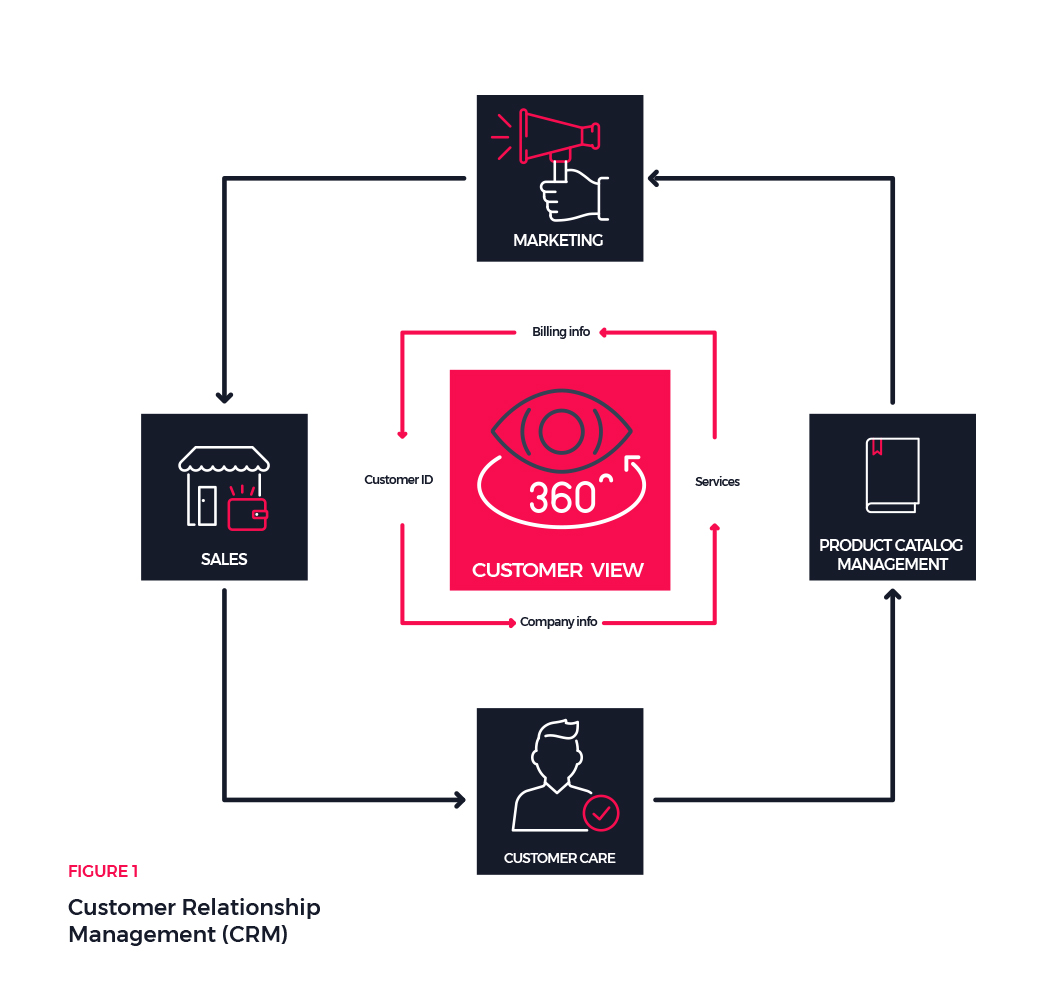Digital Transformation
Industries
Services
About us
Insights
- Careers
- Resources
- Contact us
As a leading telecommunications provider in the region, Telenor has a large and growing customer base. However, management of customer profiles and sharing of customer information between different departments was lacking efficiency.
Instead of one central system, the company used multiple applications at the point of sale. To provide service to customers, sales agents had to access different applications and pull data from various locations. This significantly decreased efficiency. Furthermore, customer data was not synchronized across multiple databases resulting in an incomplete view of customer profiles. Telenor also lacked a consolidated product catalogue across different applications and a system that could integrate data into a single, unified customer view. Because the existing systems didn’t connect with one another, employees couldn’t share data quickly or access complete customer profiles from one location. Finally, the company lacked automation at the point of sale, which further added to inefficiency.
Telenor understood they had an urgent need for a Customer Relationship Management (CRM) system that would connect the organization and provide employees with a complete profile of their customers.
The client asked Comtrade SI to deliver a CRM solution that would provide them with the following:
“Over the years working on the CRM project, through multiple phases, we faced numerous challenges, including delivering the project on time and on budget, as well as redefining organizational processes and procedures. Together, with the Comtrade SI team we were able to meet all business needs, reduce the number of applications at Telenor stores, create a 360-degreee view of the customer and redefine processes and establish automated service provisioning at the point of sale.”
Dragana Grbovic
Project Manager Telenor

In close cooperation with Telenor , Comtrade SI assessed the client’s business needs and determined that commercial off-the-shelf software would be the best fit. Comtrade SI consultants selected ORACLE’s Siebel CRM solution as it is known for delivering the best capabilities to clients in the telecommunications industry. With some customization and with IBM WebSphere software, Comtrade SI delivered a CRM solution based on telco standards.
The solution implementation was carried out in four phases.
Phase 1: Implementation of Customer Information Management system. Using data from Siebel CRM and backend integrations through application integration bus, the solution delivered a 360-degree view of the customers via a single application.
Phase 2: Implementation of Consolidated Product Catalogue. A flexible structure of the product catalogue together with complex pricing rules was a way to support multifaceted marketing and sales activities.
Phase 3: Implementation of a process driven interaction with the customer and order capture processes.
Phase 4: Implementation of order management functionalities. All order to cash processes were implemented with Siebel CRM and IBM WebSphere through integration of backend systems.
By implementing ORACLE’s Siebel CRM solution, Telenor made a huge step towards becoming a customer-focused organization. Now, the telecommunications provider can deliver more personalized services by having a 360-degree view of each customer.
The CRM solution helped the client realize the following benefits:
Better and faster service translated into happier and even more satisfied customers, increased customer retention and strong, long-lasting customer relationships. Thanks to single, unified customer profiles, the telecommunications provider is able to better manage relationships with its customers and deliver a consistent and excellent customer experience across all channels and touch points.
In addition, the new system enabled Telenor to gain a deeper insight into customer behavior and trends and use this data to cater services and offers to different segments of the customer base. Consolidation of the product catalogue and customer data has led to increased operational efficiency, better organization of data and improved information sharing among staff. Employees are now empowered with the right information, at the right time so they can make fast decisions supported by data and ultimately better serve their customers and close more deals.
Telenor Group is an international provider of tele, data and media communication services. It is one of the world’s major mobile operators with 189 million mobile subscriptions. The company has mobile operations in 13 markets worldwide and additionally 14 markets through its ownership in VimpelCom Ltd.